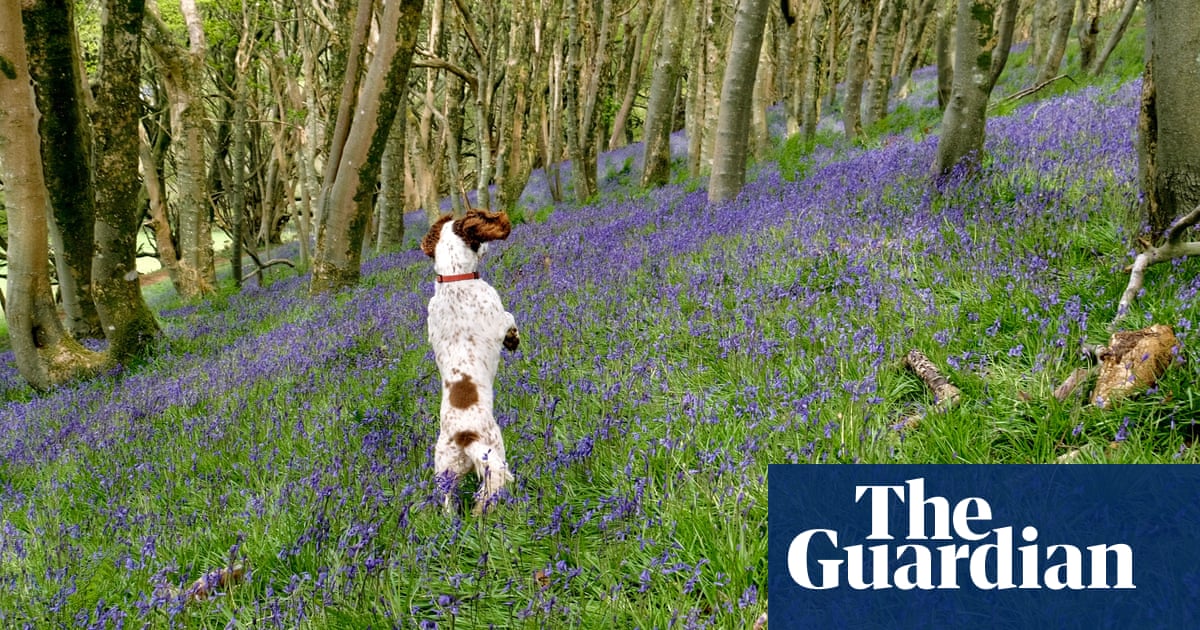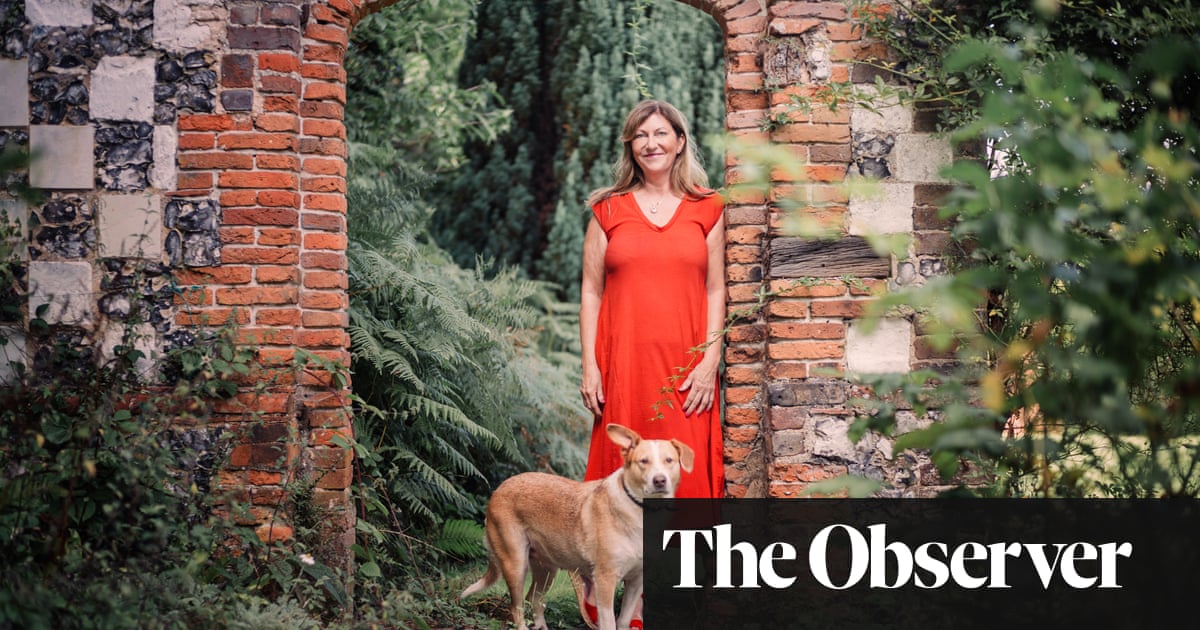
Pepper meets Mr Binks for the first time and bottom-sniffs the diminutive pooch by way of greeting. As ever, I look away. But Mr Binks’s owner, dog behaviourist Anna Webb, says: “Ah, that’s nice, they’re introducing themselves.”
Pepper, my miniature schnauzer, trots off ahead down the pavement, followed by me, holding her lead, and then Mr Binks and the glamorous Anna. The two of them are walking side by side.
“Pepper shouldn’t be walking ahead,” Anna says. She immediately laughs, to soften her sternness, adding, “She’s not the Queen!”
Unbeknown to Pepper, Anna is assessing the pair of us on today’s walk on Hampstead Heath in north London to see how well we interact together, rather like a family psychotherapist sitting in on playtime with a child and their parent. Anna is also going to give me tips on how to enhance both Pepper’s wellbeing and my own by making our daily walks an interactive, quality experience for both of us.
During a dog walk, according to Anna, host of the weekly podcast A Dog’s Life, owner and pooch should be in constant communication: the hound praised by its owner, returning when it is called (recall), and rewarded with verbal cues or edible treats. The human is rewarded with companionship, devotion and increased wellbeing. “It’s a chance for you to be together, to take a break together, and to enjoy nature,” says Anna.
Disregarding our dogs’ needs, on the other hand, helps nobody. When Anna spots a human on their mobile phone, ignoring their canine chum, her stress levels rocket. “You wouldn’t expect your child to go to the park in silence,” says Anna, “no chat about the environment and what you pass on the way, would you?”
I resolve to be my best, most interactive self after hearing this, but Pepper promptly lifts her leg outside The Mutt Hut, a grooming parlour near the Heath where she gets her eyebrows trimmed and her anal glands seen to (dog ownership isn’t all photoshoots and glamour). Unsure how to join in, I send her good vibes instead. Then, the moment she sets off, I make sure to walk in step with her, albeit aided by a surreptitious tug of her lead. But I’ve been spotted by Anna.
“The lead should be taut, but not tight,” she says. “A dog that is charging ahead doesn’t know where it’s going. The dog is taking all the responsibility for the walk. Pulling ahead, panting like a train, the dog is stressed.”
Walking to heel à la Mr Binks is where it’s at. It means your mutt is trained, can be recalled when necessary and knows its place in the pack. On this, at least, I have form: Pepper often walks between me and my husband when we make our passeggiata, her pointy ears and fondness for carrying a stick the width of four great danes eliciting both envy and awe.
Next, Pepper stops to sniff a freshly urine-sprayed lamp-post. I’m all over this. “Good sniffing, Pepper!” I exclaim, trying to prove Anna’s assertion that you can teach old dogs, ie me, new tricks. Usually, I keep schtum when Pepper indulges her Proustian tic. But if I am in a hurry I bark, “Not now, Pepper” and yank her lead.
It turns out I’ve misunderstood this praise business. You only praise a dog for sniffing when they are doing so on command. “This works as a focus tool that enables you to get your dog out of someone’s way, or to avoid another dog,” says Anna. “It’s a way of joining in the walking experience with your dog and a way to consciously activate their massive olfaction.”
Dogs have up to 300m olfactory receptors, map their environment through sniffing and communicate with each other through the chemical signals in their body odours. Anna says a dog can tell another dog’s age, rank, state of health and gender from a bottom whiff or urine trace.
“If they are sniffing all the time and you’re in a hurry, you can combine other tools like the verbal cue, ‘Look at me,’ or distract them with a toy to play a quick game. The dog is then focused on you as the provider of fun.”
When a runaway toddler careers down the path at killer speed Anna uses another tool. She immediately crouches down, holds her hand side on, as if she were about to slice through something, and then extends it towards shin-high Mr Binks and then back to herself. “‘Touch! Touch!” she calls, the collision imminent. Just in time Mr Binks trots out of the toddler’s way and comes straight to Anna. She gives Mr Binks the thumbs up, then rewards the superhero English toy terrier with a treat.
Anna explains her methods: “Combine the command with a happy face and a food reward and you are practising operant conditioning. It’s one step on from a Pavlovian response. The dog is doing something of their own choice and is rewarded; that principle is then transferred to everything they do, such as walking to the heel command.”
I am happy to report Pepper catches on quickly when Anna introduces her to the touch command. The treat helps. She’s never had venison before.
In 2008, Anna helped to launch the charity Medical Detection Dogs, which trains canines to detect odour changes in people with type 1 diabetes. It is now successfully training them to detect Covid-19. Dogs thrive on such cognitive stimulation, even if it comes in the form of a humdrum game of fetch or hunting for hidden treats. But, cautions Anna, all dogs must be trained “for life’s great landscape ahead”.
When Prudence, her miniature bull terrier, recently ran up against some bullocks in a field, Anna deployed the touch command. The duo made a quick getaway. Untrained dogs can run amok. According to the National Farmers’ Union, the cost of farm animals attacked by dogs rose by 10% last year. Of the 80% of dogs walked off the lead, according to their survey, 64% don’t come back when called. “The problem is first-time owners who haven’t trained their dogs during lockdown,” says Anna. “They think they somehow come ready-trained.”
As Tintin and Snowy and Wallace and Gromit remind us, humans and canines can enjoy a symbiotic relationship, as well as adventure and derring-do. Anna does not doubt a dog’s capacity for empathy. During the “harrowing experience” of caring for her late mother as she endured dementia, Mr Binks and Prudence rallied. “They always know when I’m on a bit of a downer. They’ll cheer me up with a mindful look or tail wag. Prudence is particularly good at this and becomes very playful and distracting, getting up to mischief, making me smile even if I don’t want to, keeping me present and minimising any wallowing. But it’s their loyalty and the fact that I have them in the first place that I find so reassuring, I’m grateful I’m never alone. They offer me unconditional love, and I find that very humbling.”
Last month the government formally recognised dogs as sentient beings with the Animal Welfare (Sentience) Bill. “They are complex, emotionally intelligent creatures,” says Anna, which is why an interactive relationship with them is imperative. To this end, she gets Pepper to walk the length of a log and jump over it. Pepper, dare I say it, is a natural. Showing off, she leaps over Mr Binks. It’s like the Tokyo Olympics and I, for one, am exhausted.
What on earth does Anna get out of all this effort? “Mr Binks and I have worked as a team, he’s trusted me and challenged himself. It’s about spending time with your dog. They have short lives and leave us heartbroken, and I’m conscious I want to know I did my best, and have memories to prove it.”
annawebb.co.uk
The rules of doggie etiquette
DO…
1 Train a total recall from distractions like joggers
2 Reward with tasty, healthy treats
3 Vary your walks according to the seasons
4 Train the perfect walk to heel
5 Invest in a 5m-long line
DON’T…
1 Use a retractable lead
2 Let your dog pull in front
3 Let your dog run up to strange dogs or people
4 Let your dog off lead without a recall in place
5 Allow your dog to chase squirrels or worry livestock












